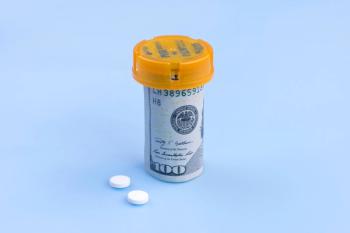
Tips for Optimizing Pharmacy Taxes
Owners can use the cash accounting method to optimize tax savings.
Numerous COVID-19 relief funding programs in 2020 gave pharmacies access to extra cash flow but added uncertainty in an already tumultuous year. With most independent pharmacies receiving Paycheck Protection Program (PPP) relief loans, Congress granted these pharmacies a last-minute gift, and some certainty, with the passage of the Consolidated Appropriations Act, 2021 (CAA) on December 27, 2020. This bill changed how the PPP would be taxed and essentially made it nontaxable. Add in other taxpayer-friendly provisions from the CAA, such as the nontaxability of Small Business Administration debt relief and Economic Injury Disaster Loan grants, among others, and pharmacies ended the year with thousands in tax savings potential with the stroke of a pen.
Consequently, many pharmacies optimized their taxes, and cash flow, without having to do anything. For those who may still face a tax liability for 2020, there is little room to limit that tax liability after the tax year has concluded. However, there is 1 last-minute planning idea that, surprisingly, I often see not being used. This strategy can still be implemented before you file your taxes for 2020.
Cash Accounting Method
The Tax Cuts and Jobs Act of 2017 allows pharmacies to report, for tax purposes, on the cash method of accounting instead of the accrual method of accounting beginning in tax years after December 31, 2017. Many pharmacies already take advantage of these new rules but we often see pharmacies still not optimizing this generally easy tax-planning tool.
Under the cash method of accounting, income accounts, such as accounts receivable from third parties, are not included in income until constructively received, which essentially is when the pharmacy collects. Additionally, expenses are deducted when paid and not when accrued. Often a switch in accounting methods will result in a write-off or expense, which ultimately lowers taxable income and tax liability.
Inventory is excluded and should not be a component of the change in accounting. Therefore, inventory must remain on the books for accounting or book purposes and tax purposes. The IRS has recently clarified how inventory was to be affected by these changes in accounting. If you have written off inventory in prior years, you will need to consider and work with your advisers to correct and return to compliance with the law. The good news is that the income added back from reporting inventory, in compliance with the law, can be spread out over 4 years, which lessens the tax burden of picking inventory back up into income.
Pharmacies that qualify for the cash method of accounting include those that have average annual gross receipts for the prior 3-year period that do not exceed $26 million. Gross receipts of related entities and those pharmacies under common ownership must aggregate their gross receipts to determine the gross receipts test. Generally, this would include controlled groups with more than 50% common control and affiliated service groups.
Speak with your advisers if you own multiple pharmacies to ensure you can take advantage.
Taxpayers must plan with their tax advisers for such an accounting change. This is not an “automatic” strategy when many variables outside the scope of this article should be considered. Also, it is always advised to keep your books and financial statements on the accrual method of accounting for the most accurate financial data as you manage your pharmacy and cash flow month in and month out.
Paying taxes is one of the largest expenses, if not the largest, you’ll pay over your lifetime. Optimize your taxes by any chance the law allows, and if you haven’t already, consider the cash method of accounting. These rules are set to expire in 2025.
Newsletter
Pharmacy practice is always changing. Stay ahead of the curve with the Drug Topics newsletter and get the latest drug information, industry trends, and patient care tips.





























































































































